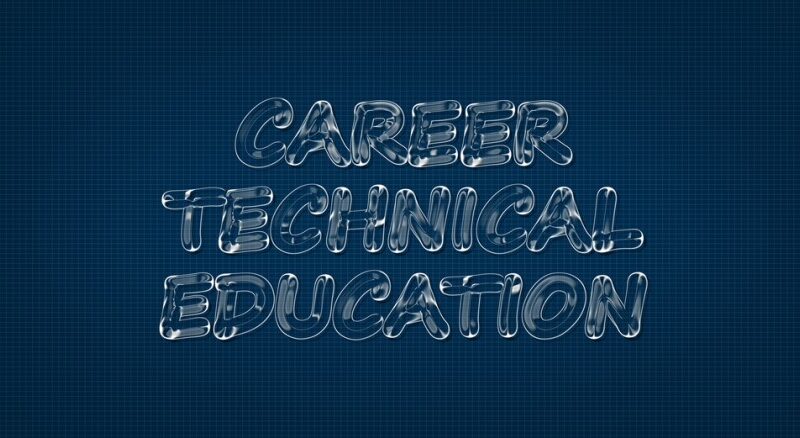Employers Involved in CTE
Education innovation has long been stymied by the fact that bright ideas don’t spread easily. Sometimes, successful strategies don’t even migrate between adjacent classrooms in the same hallway. So, you can imagine how difficult it is to transfer ideas across an ocean. Employers Involved in CTE.
With its long history of vocational education and student apprenticeships, Europe offers lessons for the resurgence of career tech programs in the United States. American schools are witnessing a new interest in job training programs from students eager to get into the workforce and state leaders grappling with a lack of skilled labor, especially in rural communities. On Friday, the Georgia Department of Education, in partnership with the Georgia Chamber of Commerce Foundation, announced it will award $3 million in grants to rural districts for projects designed to increase workforce readiness.
Learn in the Workplace
The problem is that high-demand areas such as nursing and engineering struggle to find qualified instructors willing to leave their fields for lower-paying jobs. This has led to programs, long common in European countries, where students learn in the workplace itself rather than in classrooms.
“Your best engineers don’t want to teach; they want to be engineers. So, you have to bring learners to them,” said Andreas Schleicher, director of education and skills at the Organization for Economic Cooperation and Development, in a recent online seminar on the state of vo-tech around the world.
Data shows students see better employment outcomes coming out of career tech programs that combine work and study. “What makes career and technical education successful is typically the work-based component, not the school-based component,” said Schleicher. “If you give students a chance to work with real people on real problems and do things that have real consequences, it is so much more attractive than sitting in a classroom listening to a teacher.”
Stimulate Economic Progress
The OECD is an intergovernmental organization with 38 member countries, including the United States. Created in 1961 to stimulate economic progress, the OECD also focuses on how to improve education outcomes.
In the OECD countries, 44 percent of students ages 15 to 18 are enrolled in vocational education and training. In a recent seminar on career tech by the National Center on Education and the Economy, Amy Loyd, assistant secretary at the U.S. Department of Education, said more than half of American high school students participate in career technical education in some form.
A major challenge in career tech is keeping up with rapidly evolving workforce trends. An OECD policy brief estimates that 14 percent of jobs face the risk of being automated and could disappear. A higher proportion of jobs, 32 percent, will witness dramatic shifts in what they entail. The jobs most at risk from automation and artificial intelligence are those at the lower end and the middle of skills distribution.
An OECD study shows the initial workplace success of vocational students fades over time. They graduate with skills and training that are in demand at the time but eventually become antiquated.
“In the area of vocational training, things often change very rapidly,” said Schleicher during the recent seminar. “If you teach mathematics, mathematics doesn’t evolve that fast. But if you teach electronics or a technical subject, things do evolve pretty quickly.”
Upskilling
In most countries, workers with college degrees continue to out earn those with vocational training. Especially when looking at people in their 40s and 50s, according to OECD data. “The older you are, the bigger the earnings gap when you choose a vocational pathway,” said Schleicher. “That suggests we may need to invest more in upskilling and reskilling so people who have opted for career education get the chances they deserve for a better salary.”
In Europe, employers are not just involved in delivering career training, but also in designing the program. For example, the private sector in Switzerland takes a lead in updating curriculum, providing work-based learning through apprenticeships and allowing their employees to teach part time, said Jérôme Hügli, deputy head of international education programs at the Swiss State Secretariat for Education, Research and Innovation.
“The private sector is not only a stakeholder; it is a co-owner of the vocational system,” said Hügli. “Individual companies and professional associations have a clear vested interest in keeping the quality of education very high and keeping it relevant with their ever-changing needs.”
Relevance remains a challenge to U.S. vocational education. A 50-state study of the career tech system by ExcelinEd and Burning Glass Technologies in 2019 found only 18 percent of so-called industry-recognized credentials being acquired by U.S. students were actually in demand.
“Meanwhile, there are plenty of credentials that could deliver really great outcomes, that are high paying and highly sought after, yet are going unfulfilled,” said Matt Sigelman, president of the Burning Glass Institute, during the recent National Center on Education and the Economy seminar. The institute studies the future of work and of workers.
Vicki Phillips, CEO of the National Center on Education and the Economy, urged U.S. career tech programs to look internationally for solutions and inspiration.
“The world is a laboratory,” she said, “and there are incredible innovations happening everywhere around the globe.”
Source: Employers Involved in CTE
https://www.govtech.com/opinion-most-successful-cte-programs-combine-work-and-study
Opinion: Most Successful CTE Programs Combine Work and Study
In Europe, employers are not just involved in career training but in designing educational programs. U.S. career and technical education programs could learn from this, as the most successful ones tend to have a work-based component.
The Atlanta Journal-Constitution. Distributed by Tribune Content Agency, LLC.
Government Technology

